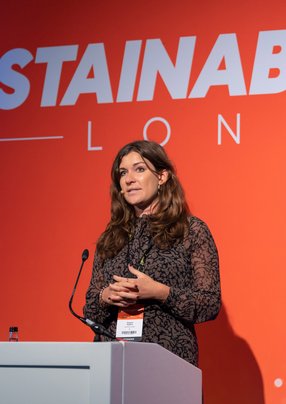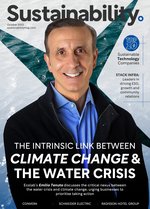
Interview with Evelyne Saelens
ESG Advisory Lead at UL Solutions
What do you think companies are getting wrong when it comes to ESG reporting and data capture?
Many companies have a preconceived notion that an ESG programme must be perfect from the start. That’s not the case. You can recognise you have gaps and document where those gaps are, and then tackle them step by step. It’s okay to have uncertainties — that doesn’t mean your programme or performance is sub-par — as long as you are transparent about them and document them. The most successful ESG programme are based on an iterative approach to scale up processes and eventually plug those initial gaps.
For instance, a major manufacturing company with many sites may believe it has to report on ESG key performance indicators (KPIs) from every site right from the beginning. Instead, they can start with their top manufacturing sites and add other sites later; the important piece is a path to improve the reporting. It comes down to accepting that no business will be perfect from day one. It’s all about getting to a place where you can document steady progress in a pragmatic way that aligns with the respective standards and remains agile and process-focused along the way.
Many companies approach ESG reporting as a one-off exercise, which is generally a misguided approach. These organisations don’t focus enough on the process and efficiency side of their ESG KPIs — concentrating instead on a lot of manual exercises to get the year’s report over the finish line and then leaving it to rest until the next year. Companies need recurring data collection and a workflow process to continually improve data and performance. For instance, as the current CDP (formerly the Carbon Disclosure Project) reporting period is winding down, now is the time to begin to gear up and build a process for next year’s disclosure period.
What are the main challenges they are facing?
The biggest challenge is stakeholder engagement. In order to be successful, an ESG programme should be an organisational effort. ESG reporting needs to be embedded in the company’s values. There needs to be a sense of ownership established across the organisation so that it’s clear how different roles contribute to the overarching programme. It’s procurement, human resources, facilities management and so on. Establishing responsibility and accountability across all business functions is paramount.
Some of the most successful approaches to stakeholder engagement come from the top down as well as the bottom up. That means that C-Suite leaders are vocal about the company’s commitment to these programmes and that employees are encouraged to mobilise and play an active role in shaping the programmes and bringing new ideas to the table.
What can businesses do to better track and manage Scope 3 emissions?
A key KPI in many ESG programmes is carbon emissions, and more specifically, the focus on value chain or Scope 3 emissions. Scope 3 presents a significant challenge to a lot of companies as they’re tasked with dealing with data, activities and stakeholders in their supply chain that they’ve traditionally had very little visibility into.
The first and most essential thing a company can do is gain an understanding of what is important in its own value chain of emissions so it can really focus on the carbon hotspots. There are screening tools out there that, with fairly limited data input, can point you in the right direction. Even if it’s a little rough around the edges, this is perfectly acceptable to get a first picture of your value chain emissions.
The second step is building relationships with external stakeholders, as that’s where most Scope 3 data come from. One way to encourage your external partners is to share your emissions information, enabling greater transparency in your efforts to engage suppliers. This also lays the groundwork to align more closely with partners to build a common understanding and shared accountability, transparency and management in the supply chain.
I would love to see more industries coming together to create shared platforms to tackle this challenge, because, their value chains are shared. In fact, this is already happening in industries like manufacturing and pharmaceuticals. The more exchange of information, the better, and it's really exciting to see some of this collaboration already taking shape.
Finally, when it comes to managing and reporting Scope 3 data, adopting a robust software system that can cater to all 15 categories of Scope 3 emissions will play a big part in the overall programme management and disclosure experience.
How can ESG data help businesses make more sustainable business decisions?
I believe that ESG data can ultimately help businesses increase their value. Again, it’s about understanding what data are most important to the company and the industry and how that can drive the company's decisions. That goes back to embedding ESG into a company’s DNA. It’s more than just making decisions from a sustainability perspective; it’s doing so from an overall business value creation perspective.
For instance, through our work with a leading US health plan provider, the company reduced energy use by 8%, saving $19.6 million (USD) annually. That kind of reduction is good for business and the environment.
In short, for many businesses, looking at ESG factors can help mitigate risks, uncover new business opportunities and help reduce costs.
Featured Interviews
“Part of our strategy involved making our network as sustainable as possible, and that’s where we look at how we’re powering that network”






